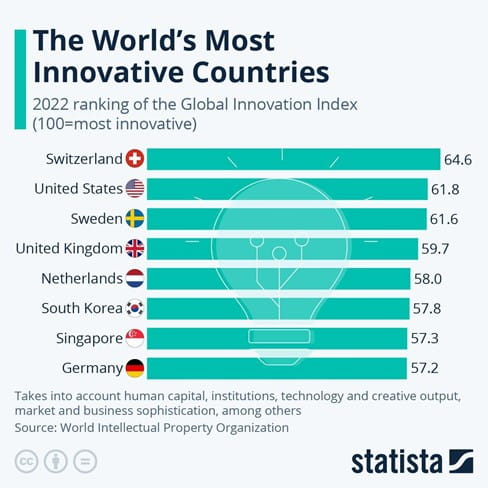A year with little economic growth seems out of place and many countries now face a recession. Few realize that for most periods of human history economic growth has been zero or very gradual. Growth rates increased after the First Industrial Revolution, influenced by innovation in many areas including transportation, physics and chemistry. This also led the Western world to overtake China which rejected certain technologies such as the expansion of railroads. Economic growth either results from a population increase or higher productivity. With populations decreasing in many countries, higher productivity and efficiency becomes the solution and to achieve this innovation will play a critical role.
Global Economic Crisis
With the world recovering from the Covid-19 pandemic but facing supply chain issues partly due to China’s Zero Covid policy, rising energy and food prices due to the Ukraine war, and escalating inflation, the global economic outlook is bleak. Rising inflation rates worldwide have led to the tightening of monetary policies by central banks globally. Stagnant growth has affected developing countries even more. Their currencies have depreciated against the US dollar resulting in higher costs for importing and debt servicing. Many countries are seeking IMF assistance.
On the domestic front, fiscal consolidation is made tougher by the need to assist the poor and provide subsidies, resulting in large and widening fiscal deficits. Revenue based fiscal consolidation is also challenging since the private sector is already affected by high energy costs, inflation, and supply chain constraints. Coming out of recession will be challenging but still possible if economic growth is sufficient to drive government revenue and achieve fiscal consolidation. There is a positive relationship between economic growth and innovation according to an IMF study. So driving innovation offers a way forward in some countries, especially those that are highly innovative (see chart).

Source. Statista.com
The Effects of Innovation on the Economy
The evidence is glaringly clear on the transformational effects of innovation at the macroeconomic level. A study shows that influential patents were followed by periods of high productivity growth. The impact of electricity and railroad technology on boosting economies in the late 19th century and the communications and computer revolutions of the 1990s are good examples. Innovation has led to increased productivity even as the workweek became shorter and production less capital intensive over the last two centuries. Breakthrough innovations have been associated with increased productivity levels across firms and sectors, and positive macroeconomic impacts.
Sadly, innovation is not being prioritized when countries draw up their plans for economic development. Most countries in East Asia underperform on several key indicators of innovation. According to the World Bank, the concentration of innovation is more on manufacturing industries than service sectors.
By not focusing on research and development countries may give away their competitive edge to other nations. But with rising debt and fiscal consolidation, reducing government spending on R&D is usually an easy target during tough economic times.
Spending on innovation has many advantages as each tech job supports three jobs in other parts of the economy. Moreover, in some countries spending on digital infrastructure is becoming more important than spending on physical infrastructure projects such as bridges, dams, and highways. Digital transformation and technological innovation boost many sectors such as education, infrastructure, manufacturing, agriculture, and health with spillover effects happening through technology transfers and knowledge sharing.
But challenges exist. There is a lack of human capital, financing, and information on innovation. Government policies also tend to focus on inventions rather than on the diffusion and adoption of technology. Lack of relationships between research institutions and the private sector is another challenge.
Future of Innovation
The Fourth Industrial Revolution will drive the next spurt of economic growth. Innovation is vital to fight off climate change through decarbonization, renewable energy and carbon capture technology. A greener economy will have positive effects for the global economy with the ILO estimating the creation of 100 million new jobs by 2030. Communications advancement has enabled remote working and flexibility in working practices as well as access to talent beyond boundaries. The increasing use of artificial intelligence to replace monotonous work can drive human capital towards work that requires cognitive skills which in turn will increase productivity. Fintech is driving financial inclusion and access to finance notably among women. Blockchain technology and cloud computing are vital in proliferating digital enhancement. Taking account of all these factors, innovation can once again drive economic expansion and ease fiscal policy making in the future.






